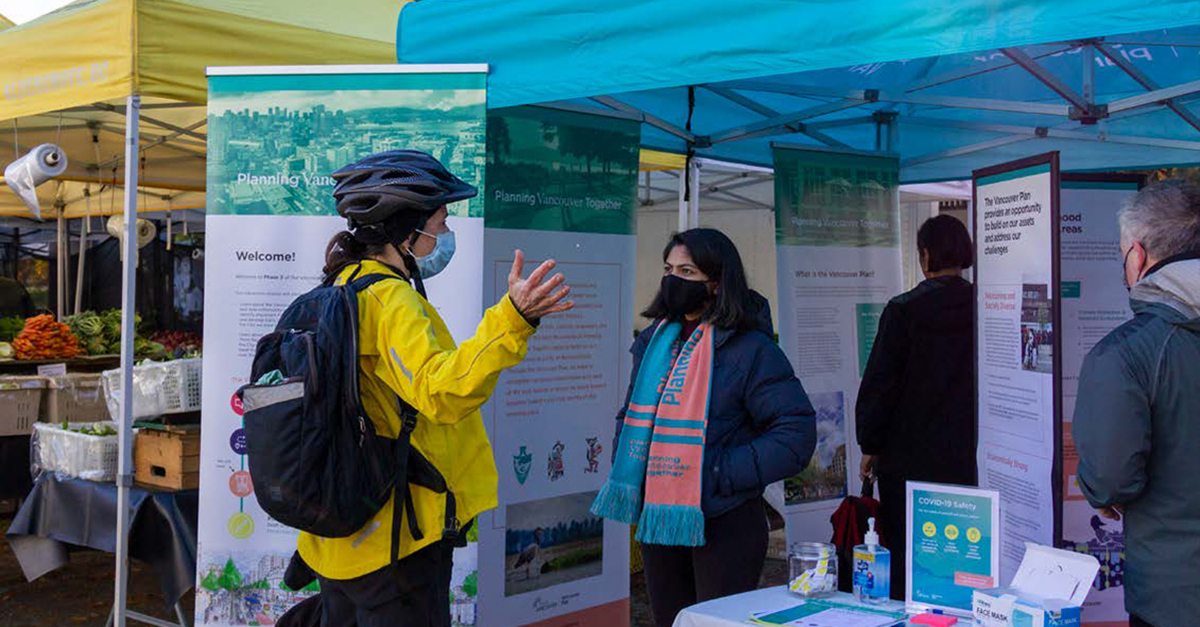
March 7 2022 –
Adding more housing choice in neighbourhoods across the city was identified as the public’s highest priority in a Vancouver Plan engagement report released today, with over 75% of respondents supporting more equitable housing choices in all neighbourhoods.
The other top-ranked priorities were:
- Protecting ecosystems and biodiversity
- Reducing Vancouver’s carbon footprint
- Protecting small, locally-owned businesses
- Creating ‘people-friendly’ streets that prioritize walking, rolling, and cycling
The report summarizes the results of the third phase of public engagement on the Vancouver Plan, which explored where and how the City should locate and prioritize growth to create a more livable, affordable, and sustainable city.
There were more than 6,500 points of contact in the public engagement conducted between October 25 and November 28, 2021. Participants also indicated a high level of support for all three Big Ideas of the Vancouver Plan that emerged through the first two phases of engagement:
- More equitable housing and complete neighbourhoods
- An economy that works for all
- Climate protection and restored ecosystems
Key findings
- 78% of people surveyed either strongly or somewhat agreed that Vancouver should have a range of housing options in all neighbourhoods, particularly in those with low density now.
- Over 80% supported low-rise apartments up to six stories, multiplexes and townhouses in areas that are mostly single detached homes; 48% said mid-rise up to 12 stories are acceptable.
- 77% supported rental housing options on smaller, local roads within neighbourhoods.
- 68% agreed all neighbourhoods should have housing options through increased heights and density for those who make less than $80,000 a year.
- A majority of respondents indicated a preference for density to be spread out with more six to 12 storey buildings distributed throughout rapid transit areas, versus concentrations of over 12 storeys closer to stations.
- For shopping areas, a majority preferred density located in lower rise buildings (three to six storeys) in the surrounding neighbourhood as opposed to higher (six to 12 storey) buildings located immediately in and around the shopping area.
The process
To ensure the Vancouver Plan (and our future city) is shaped by a broad cross-section of voices, we have been gathering input from people who live, work, or play in Vancouver, with attention to historically underrepresented groups.
Engagement activities covered a wide variety of approaches, including:
- Surveys
- Virtual workshops
- Virtual and an in-person open houses
- Pop-up booths across the city
- Other events
We also contracted Ipsos to conduct a randomized survey with a representative sample of Vancouver residents. The results from this survey are consistent with the ideas and opinions expressed for the priorities identified above.
Next steps
After carefully considering the community input from all phases of engagement and carrying out critical technical work, we will finalize the draft Vancouver Plan in April 2022. The draft plan will include a land use strategy for how Vancouver will grow into the future.
We will present the draft plan to the public to hear their thoughts, and will invite everyone who lives, works, or plays in Vancouver to participate.
After collecting feedback on the draft Vancouver Plan, staff will summarize the input and present the final Vancouver Plan to City Council for approval in June 2022.
When complete, the Vancouver Plan will be a strategic land-use plan with supporting policies that will guide growth and change for the city to 2050 and beyond. It also aims to enhance the qualities that make Vancouver special while responding to the challenges facing the city and its residents.